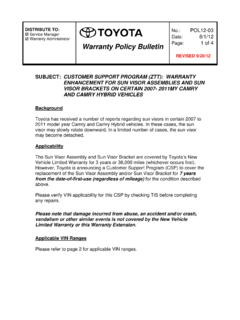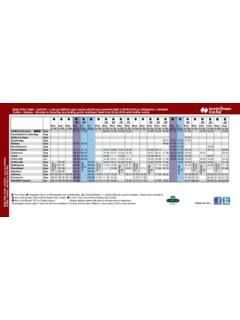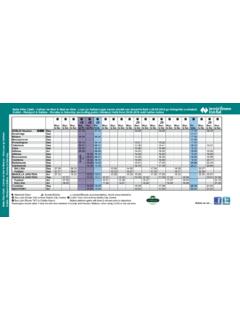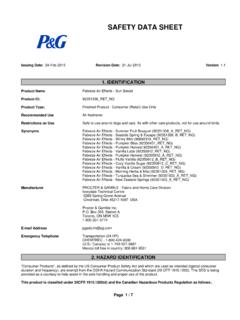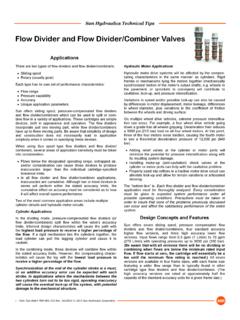Transcription of Radiant Energy - ESP® Low-E Reflective Insulation - …
1 TmLow-E InsulationRadiant Energy from the sun travels 93 million miles through space to warm the earthEnvironmentally Safe Products, warming of your world begins with Radiant EnergyProtect your world withInstall Low-E !Doc#8004 WHY DOES Low-E WORK?It s the Law!The second Law of Thermodynamics, unlike man made laws, cannot be broken HEAT goes to COLD by:CONDUCTIONCONVECTION, OR RADIATION (INFRARED)WHAT IS CONDUCTION?When two surfaces come in contact, the warmer surface gives up heat to the cooler surface as can be seen with a glowing burner on a stove heating the pot it is in contact with.
2 In a building this is limited primarily to studs connecting outer and inner surfacesWHAT IS CONVECTION?The movement of air as a result of air being air rises seeking the coldest point. Convection is visible as wavy lines above a hot road. Convection is a major concern in the winter, but not in the IS INFRARED RADIATION?Electromagnetic waves that can only be seen as part of the rainbow. It travels at 186,000 miles a Energy travels in all directions seeking a cooler object to strike and then generates ovens work on the same ovens heat the air, while a microwave heats what it Infrared is like microwaves at lower frequencies.
3 Most of us do not understand microwaves or electricity but we use and enjoy the benefits of them. We may not understand infrared radiation but we can learn to make it work for us by learning how to control # WHY DO WE INSULATE?1) For Comfort2) To reduce Energy Consumption3) To help Control CondensationWhat is an R-Value?R-Value is the resistance to CONDUCTIVE heat flow. Conduction is only 3-7% of total heat loss. Mass Insulationsonly deal effectively with R-Value have any effect on Infrared heat?No, Most mass type insulations absorb Infrared like a sponge and store it like a battery allowing it to escape where we don t want R-Value have any effect on convective heat loss?
4 Some. With recent studies by Oak Ridge National Laboratoriesthey have found the colder your attic gets the more heat loss you have through convective currents. R-Values were found to be reduced by as much as 50% in the about Moisture?Most mass insulations absorbs moisture, especially in the winter when warm moist convective currents find a cold this occurs, the R-Values drop tremendously and in extreme cases the Insulation must be # that we understand the three forms of heat loss and gain, the question is, Is R-Value the only insulating option thatwe should think about?
5 When insulating we must take intoconsideration all three forms of heat loss and gain. Like millions of Americans you have done a great job solving conductive heatloss. What are you going to do about the other two?Especially Infrared!50%to75%65% to 85%Upto45%3% to 7%3%to7%15% to 20%Upto93%3% to 7%0%0%10%20%30%40%50%60%70%80%90%100%100 %90%80%70%60%50%40%30%20%10%0%0% 10% 20% 30% 40% 50% 60% 70% 80% 90% 100%Convection Conduction RadiationConvection Conduction RadiationConductionRadiationConvectionSu mmer Heat GainHeat Loss through Ceiling/RoofHeat Loss through WallsLets Take A Look4 Doc# Infrared Blocking A New Form Of Insulating?
6 Infrared blocking, is one of the oldest forms of man made Insulation . Dating back to the late 1700 s, the first recorded form is the DeWars flask, which we know today as the glass lined Thermos bottle. Lets face it, there has never been anything better for keeping something hot in the winter, or cold in the summer than the Thermos World War II, the government confiscated aluminum shutting down the Reflective Insulation industry, thus ushering in the mass Insulation industry, with asbestos, fiberglass and cellulose. All three are relatively new forms of wasn t until the 1960 s, with the advent of the space program, that NASA brought back infrared blocking in astronauts suits, spacecraft Insulation and just about anything they send into space.
7 So many things in our everyday life are a result of space technology, like calculators and computers, isn t it time to benefit from Infrared Blocking! also known as Reflective Insulation and Radiant barrierTurn your buildinginto a using Low-E as anInfraredBlockerIn our everyday life we use Low-E benefits. When we bake a potato, we wrap it in aluminum. When we roast the Thanksgiving turkey, we cover the legs and back to keep it from scorching. Many food items are sealed in aluminum to keep them years, windows were the big problem in our homes when dealing with heat loss and gain, then they coated windows with a Low-E coating, making them more t it time we make our walls and ceilings as efficient?
8 5 Doc# InsulationMass InsulationSUMMER010001000120012025,658 BTU s48,877 BTU s2,712 BTU s1,425 BTU s075 FloorLow-E InsulationMass InsulationWINTER04004002002030,349 BTU s45,058 BTU s2,107 BTU s1,686 BTU s075 FloorArrows representinside surface facingtemperatures(including Insulation , if applicable)Average non reflectiveinsulation with an e = .90 Average non reflectiveinsulation with an e = .90 Low-E Insulation inroof design with e = .03 Low-E Insulation inroof design with e = .03In the chart above we are demonstrating the difference in heat transfer with 75 degree floor temperature and using as an example, 120 degree summer inside roof temperature, with no Low -E,48,877 btu s are transferred and with Low-E , 2,712 btu s are does Low-E mean?
9 Understanding what Low-E means can be difficult. All surfaces have an e rating from .01 to The e stands for emissivity, which is the ability of a surface to reradiate or give off Radiant heat to a cooler surface. The lower the e rating, the lower the amount of Radiant heat the surface will give off. For 00example, a wood stove surface has an e rating of , meaning that at 100 it will give off 100 in 0infrared. Cover it with a Low-E surface with an e rating of .03 then that surface will re-radiate only 3 in infrared!All building products have an e rating, most of them over.
10 80 The graph below demonstrates what Low-E surfaces can do for youWhat can Low-E do for me?Why is a Low-E surface highly recommended?The left sides of the houses above are demonstrating the potential heat loss and gain in buildings using only mass type right sides of the house demonstrate the potential reduction in heat loss and gain by adding Low-E with the mass would you rather be heating and cooling?6 Doc# it wouldn t be for comfort, we wouldn t have much of an Energy bill, would we! In the winter we would keep our buildings just above freezing , and in the summer HOT.


